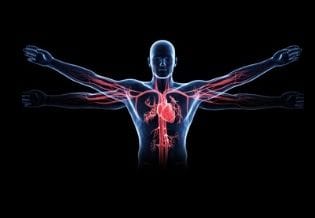Abstract
Body mass index (BMI) seemingly is an important scale for the body types determination in individual with different ethnicity. Accordingly, individual with BMI< 18.5 are classified as slim or underweight and people with BMI between 18.5 -24.9 are called normal body types. Subsequently, those individual with BMI between 25-29.9 are categorized as overweight and people with BMI > 30 are classified as obese people. Nonetheless, important question is where the muscular individual are located in this BMI scale ? Macular induvial also called overweight or obese in BMI scale which can create kind of confusion for induvial because the might try to lose weight whilst they do not actually need it. Thus ,it seems BMI measure is not sensible measure for muscular induvial as otherwise the can be at risk of health problems in various ways. Uses of the another apparatus such an ordinary weight scale or computational devices which could estimate the body type according to the BMI more accurately can be helpful.
Author Contributions
Copyright © 2018 Nasim Habibzadeh
 This is an open-access article distributed under the terms of the Creative Commons Attribution License, which permits unrestricted use, distribution, and reproduction in any medium, provided the original author and source are credited.
This is an open-access article distributed under the terms of the Creative Commons Attribution License, which permits unrestricted use, distribution, and reproduction in any medium, provided the original author and source are credited.
Competing interests
The authors have declared that no competing interests exist.
Citation:
Introduction
Quetelet index or body mass index (BMI) is value which is derived from body weight (or body mass and height measures from different individual which was introduced in the 19th century . More specifically, BMI is defined according to the body mass index in kilogram (Kg) that is divided by the height square in meter (m2) at which is shown through formula below 1.
Body mass scale is an important risk assessment measure for different weight ranges and it seemingly kind of determination of body fat in different people. Correspondingly, individual who have the BMI< 18.5 are classified as slim or underweight and people who have BMI between 18.5 -24.9 are called normal body types. Subsequently, those individual who have BMI between 25-29.9 are categorized as overweight and ultimately the people who have BMI > 30 are classified as obese people.
Nonetheless , the important question is where the muscular individual are located in this scale ? The Body mass index scale show all people with high level of muscles also overweight or obese ! This is because the BMI scale is designed in accordance to the body fat levels not body muscles mass levels . Thus , a question will appear that whether the BMI scale is a accurate measure for muscular individual 2 ?
This BMI measure can create some confusions for induvial with higher level of muscle mass regarding their appearances since it can disturb their diet types or the amount of the movement they do in overall. The people can do extra attempts through over activities in their daily workouts or eat less of their real needs to lose weight that physiologically can put their health at major risks. They may lose their body water, minerals and more importantly their real body mass and as result the states of being too weak and frail to deal with daily tasks 3, 4.
Thus, it seems the people with high level of muscle mass require to stope to use the BMI scale to measure their body types and alternatively to choose more healthy scale to avoid health associated problems as it sounds BMI measure is not good scale for people with muscular body types. Utilizing another apparatus for example an ordinary weight scale is more rational instruments for people with greater level of muscle mass for their general health information. Other computational devices which could estimate the body type according to the BMI more accurately may could assist individual with different ethnics.
References
- 1. (2009) National Obesity Observatory. Body Mass Index as a Measure of Obesity. , London, England: Public Health England
Cited by (1)
- 1.Berot Aurélie, Gitton Anne, Diallo Alpha Mamadou, Rahim Assia, Lukas Céline, et al, 2022, Characteristics of newly diagnosed type 1 diabetes in paediatric and adult population from Reims University Hospital, France from 1997 to 2019, Diabetes & Metabolism, 48(5), 101346, 10.1016/j.diabet.2022.101346

